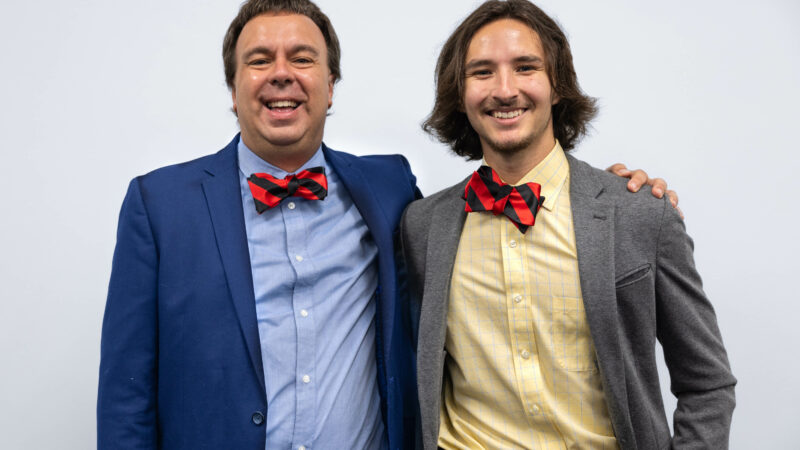Polk State graduate hopes research inspires others to pursue passion for STEM

For recent Polk State College graduate Dylan Brown, mathematics is an exciting subject that he is beginning to explore through research. Brown hopes to inspire other Polk State students to use research as a way to explore their own STEM interests.
Brown, 18, spoke before about 20 Louis Stokes Alliances for Minority Participation (LSAMP) Program students on June 28 with the hopes of inspiring them. Brown shared his research on relationships between two famous number patterns – the Fibonacci and the Lucas sequences.
“I don’t think this will change the world,” he said. “I do hope this will encourage Polk State students to get involved in something on campus.”
Both the Fibonacci and Lucas sequences are number patterns where the next number is found by adding the previous two numbers together. Through his research, Brown noted many relationships between the two sequences.
For example, adding the first (0) and third number (1) in the Fibonacci sequence resulted in the second number (1) in the Lucas sequence. Adding the second (1) and fourth (2) in the Fibonacci sequence gave a sum of the third number in the Lucas sequence (3).
| Index | Fibonacci | Lucas |
| 1 | 0 | 2 |
| 2 | 1 | 1 |
| 3 | 1 | 3 |
| 4 | 2 | 4 |
| 5 | 3 | 7 |
| 6 | 5 | 11 |
| 7 | 8 | 18 |
| 8 | 13 | 29 |
| 9 | 21 | 47 |
| 10 | 34 | 76 |
“As I started looking at number patterns, I realized I could be a researcher, too,” Brown told the group of students. “You don’t have to be at some big, prestigious university. You don’t have to love math to do research. Find something you love.”
Brown graduated in May with his Associate in Arts. Planning to major in statistics, Brown has two prerequisite calculus classes to take before moving on to pursue a degree in statistics. He hopes to attend the University of Florida.
“To have a student this passionate about mathematics is a dream,” Mathematics Professor Dr. Mike Long said. “He’s very inquisitive. He gets really excited. His energy is amazing.”
While it is a mathematical sequence, Brown noted that the Fibonacci sequence was found in nature, such as in the spiral of a sunflower or the way populations multiply. The renowned Italian sculptor Michelangelo used the Fibonacci sequence in all of his work.
“Math is the language of the world,” Brown said. “Math is thought of as being abstract. One of my passions in life is to change the stigma of math. I want to make it fun.”
The inspiration for Brown’s research comes from Dr. Long. Brown encouraged others to work with their professors on topics they were passionate about.
“If you see a pattern that you think is significant, talk to a professor in that field,” Brown said. “You never know when you’ll strike gold. Sometimes, you have to throw things against the wall and see what sticks. That’s what research is.”
Long noted that unlike scientific research where its benefits can sometimes be seen immediately, the significance of mathematical research can take a while for its value to be revealed.
“With computer science and cryptology, a lot of what we use today comes from mathematics we knew about 400 years ago,” the professor said. “We may not know why this is important or be able to put it to use for another 200 years.”
During his research comparing the two sequences, Brown noted that not all his hypotheses were correct. Long said that was actually a good thing.
“Failure in research is as important as success,” Long added. “Let’s say someone tries to find a cure for cancer and it fails, it’s important that it’s documented, so someone else doesn’t try the same thing.”
Following Brown’s presentation, which he called ‘Math is Magic,’ the Polk State graduate took several questions. The LSAMP students remained engaged throughout.
“It’s always interesting when you learn something new,” said Jarell Felix, 17, a dual enrolled student and soon-to-be senior at Lake Gibson High School. “It was fascinating to learn how research can lead to different things – even if not right away.”
LSAMP is a program that assists minority students entering STEM fields. Applications to join can be found here. Lianet Torres, 18, an LSAMP student and Polk State freshman said she was inspired by Brown’s research.
“I like how determined he was to take his time and figure out how things were connected,” she said. “He stayed with it and worked through each problem.”

